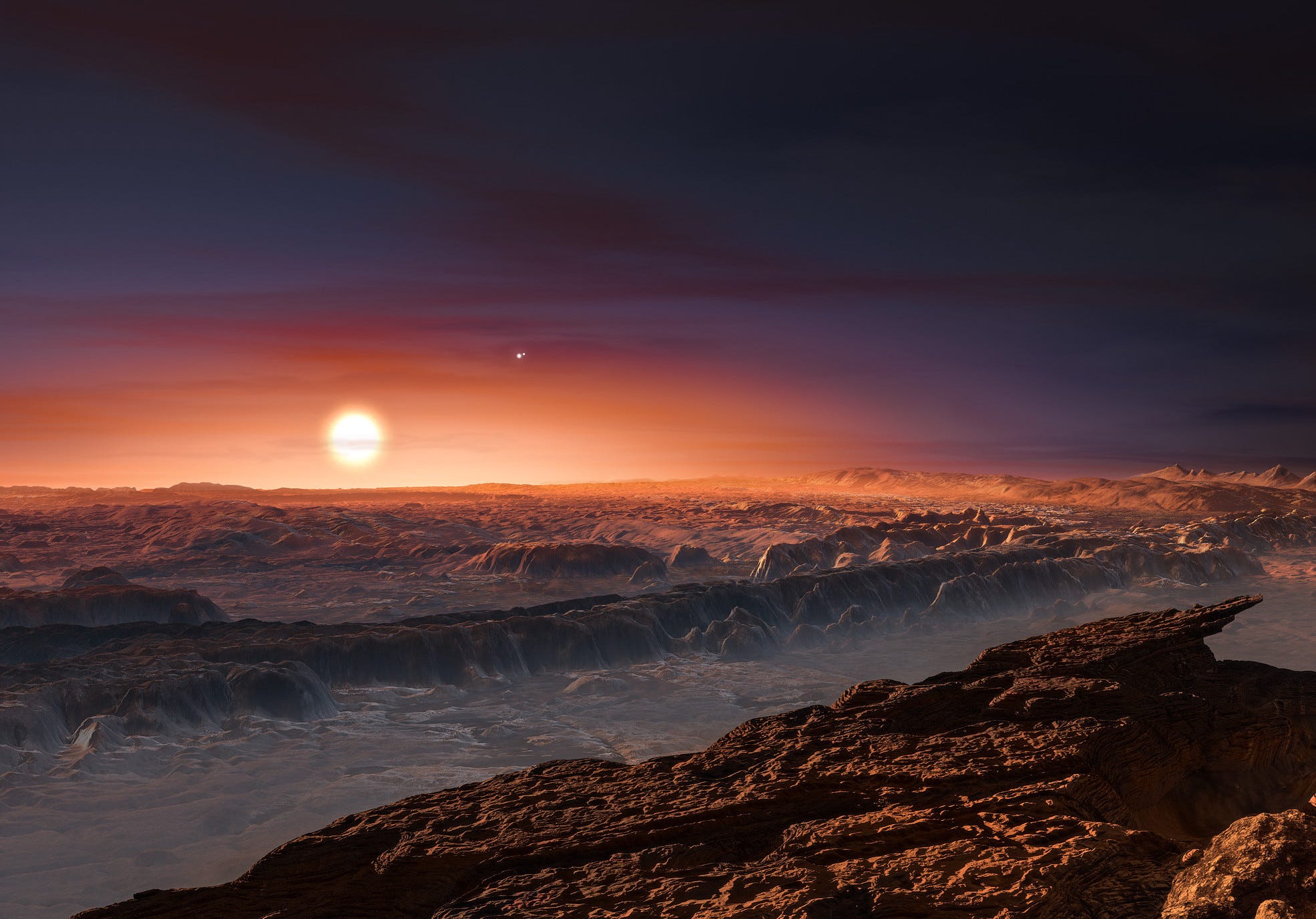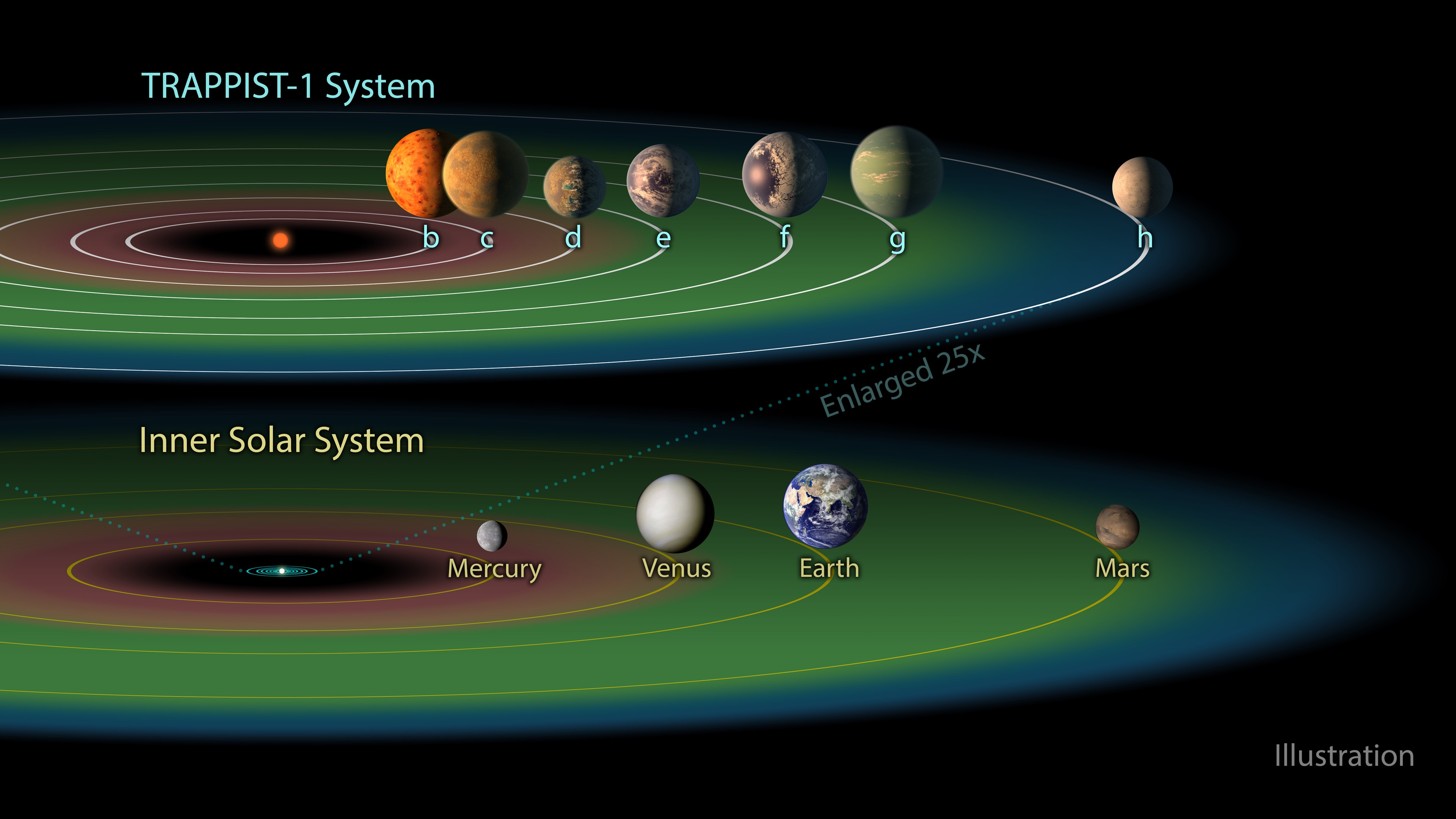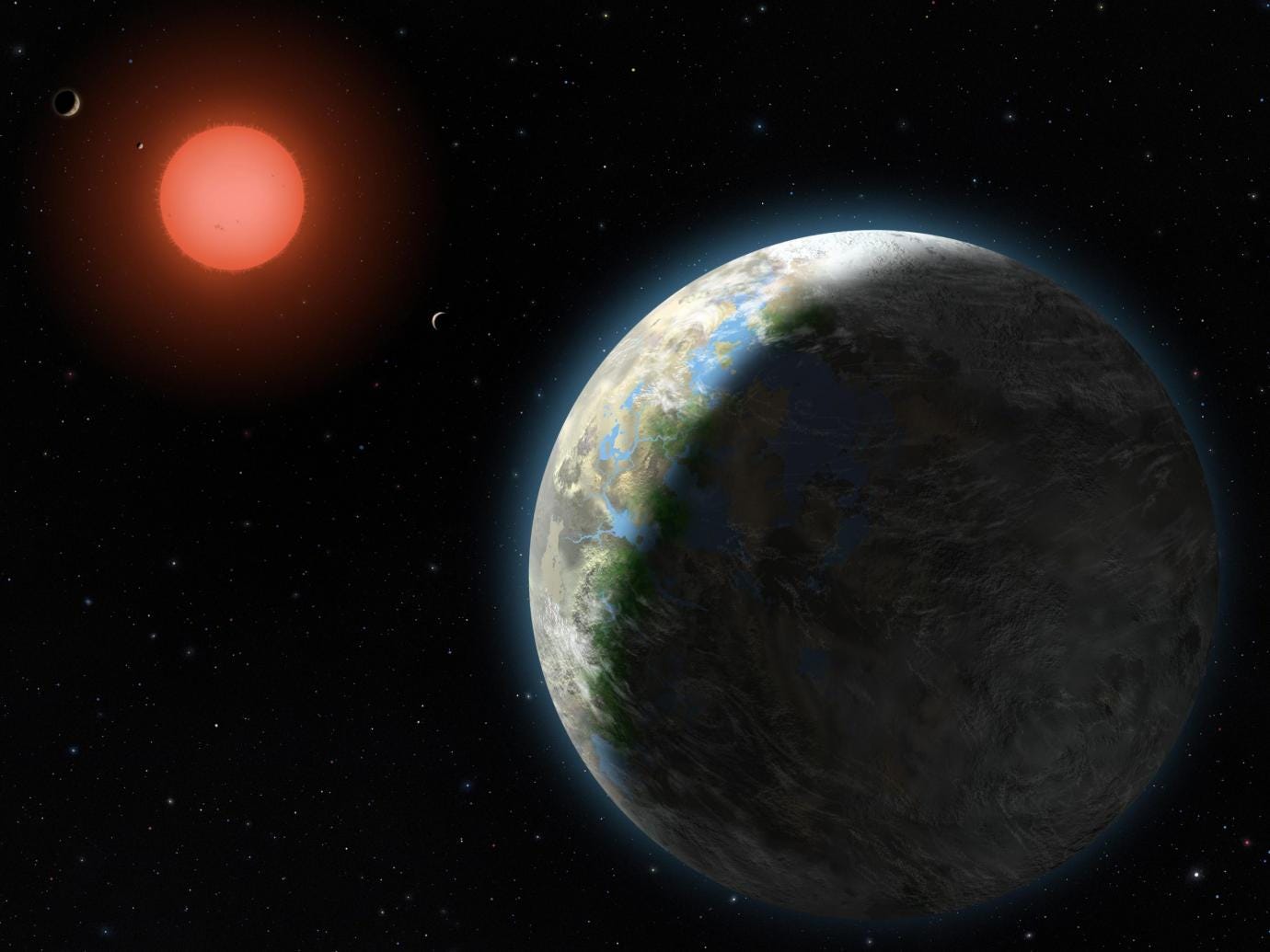Are the Universe's smallest stars promising places for life?
When all sun-like stars die in few tens of billion years, planets orbiting red dwarf stars might be the only options for life to take root on.
Our Sun won’t last forever. In about 5 billion years, it’ll run out of nuclear fuel, swell up like a giant balloon, and then gradually fade out of existence. All traces of life around it will be wiped out in the process. Other Sun-like stars throughout our galaxy will meet similar fates, with average lifespans of 10 billion years.
Fortunately for us, under the right conditions life can emerge just a billion years after a star is born. And our star is far from typical: The most common type of star in our galaxy, a red dwarf, can shine for more than a trillion years. Red dwarfs make up more than 75% of the 200 billion stars in the Milky Way. Owing their names to their colors and diminutive sizes, red dwarfs are barely bigger than Jupiter, burning through their fuel slowly thanks to their lower masses and gravities.
Because they are so common and long-lived, red dwarfs present promising places to search for life beyond Earth. Some of the most exciting exoplanets—planets that orbit other stars—we’ve found to date are orbiting red dwarf stars. But for all the promise these stars have to offer life, there are perils.

Exoplanet celebs
The closest star to our Sun, Proxima Centauri, is a red dwarf. This is why scientists got excited when they found an Earth-sized planet there known as Proxima b (in exoplanet naming, the “a” designation usually goes to the star) in 2016. Lying just 4.2 light years away from Earth, Proxima b sits in its star’s habitable zone, the not-too-hot, not-too-cold region around stars where liquid water can exist on a planet’s surface.
This has raised hopes that we have cosmic next-door neighbors. In 2019, the Parkes radio telescope in Australia detected a radio signal coming from the direction of Proxima Centauri. There is a slim chance that the signal came from extraterrestrial beings, though other explanations like terrestrial interference on Earth are more likely.
Two years earlier in 2017, astronomers using Earth-based telescopes and NASA’s Spitzer Space Telescope discovered 7 Earth-sized planets around red dwarf star TRAPPIST-1, which lies 40 light years away. Three of these planets are in the star’s habitable zone. We have found even more potentially habitable Earth-sized planets around other red red dwarfs since then.

The perils of a red sun
There’s a catch: Not everything is rosy under a red sun. Because red dwarfs are much cooler and dimmer than Sun-like stars, their habitable zones lie much closer. Proxima b, for instance, orbits an average 8 times closer to its star than Mercury.
This proximity presents formidable challenges for life: First, much like the Moon shows only one side to Earth, a red dwarf star’s gravity quickly slows down the rotation of a nearby planet to the point where only one side of the planet always faces its star—a phenomenon known as tidal locking. The dayside gets hot enough to boil water and the nightside cold enough to freeze it. Having an atmosphere like Earth or Venus can level out these temperature differences.
Red dwarf stars also flare more frequently than our Sun, unleashing waves of ultraviolet and X-ray radiation that is harmful to life as we know it. If the Sun can strip off Mars’ water and dense atmosphere from a huge distance, planets like Proxima b lying about 30 times closer to furiously flaring stars could lose their atmospheres in just a hundred million years. To make matters worse, such planets being tidally locked means their molten interiors likely churn slowly, generating feeble or no magnetic fields. This deprives the planets from the kind of radiation protection that is so effective here on Earth and contributes to its proliferation of life.

In 2014, NASA's Swift mission caught a red dwarf emitting a flare 10,000 times more powerful than any ever expelled by our Sun. Most newly born red dwarfs may emit such mega-flares, perhaps in revolt against us having judged them on size. The intense radiation from these mega-flares could prevent life from ever arising on nearby planets.
Taken together, these factors paint red dwarf exoplanets as water-poor wastelands baking under dull red skies. Is there any hope for life around these stars?
Cloudy with a chance of life
If an exoplanet forms far enough away from a flaring red dwarf and starts off with significantly more water than Earth, it could retain enough water in the long run despite the flaring. This could be the case for TRAPPIST-1: Hubble’s ultraviolet observations of the 8-billion-year old system hinted the three habitable-zone planets may have some surface water.
With surface water comes water clouds like on Earth. In 2013, extensive simulations of the atmospheres of red dwarf planets showed that exoplanets with surface water and clouds could reflect enough sunlight to prevent a planet from becoming too hot and thus unconducive to life.
Furthermore, just like in our own solar system, exoplanet moons in red dwarf solar systems could host subsurface water oceans despite being much further away than the Sun. But it will be some time before telescope technology advances to the point where we can take a look.

Finding out
The much-awaited James Webb Space Telescope (JWST), launching in 2021, will be able to measure temperatures of planets around other stars. If a planet around a red dwarf has clouds, the temperature of the star-facing side would be lower compared to that of a cloudless planet, and vice versa. JWST will also observe atmospheres of potentially habitable planets around red dwarfs and detect if they host significant amounts of oxygen, carbon dioxide, methane, or water—the right blend of which could support life as we know it.
Other life signatures are likely out of JWST’s reach but could be detectable in atmospheres of red dwarfs by future telescopes. Scientists recently studied how red dwarf flares might affect exoplanet atmospheres and found that constant flaring would increase the amount of nitrogen dioxide and nitric acid in an atmosphere that would otherwise be too faint for detection. Both of these chemicals are possible indicators of life.
Even if it turns out that red dwarf stars do host planets with water, it’ll take a long time to know if they’re truly habitable. If they are, the implications would be vast: Not only are they excellent places for life to currently exist, but when all Sun-like stars in our galaxies have died, red dwarfs will be the only stars left. Exoplanets orbiting them might eventually become the only options for life.
Originally published at The Planetary Society.
Like what you read? Support me to keep me going.
